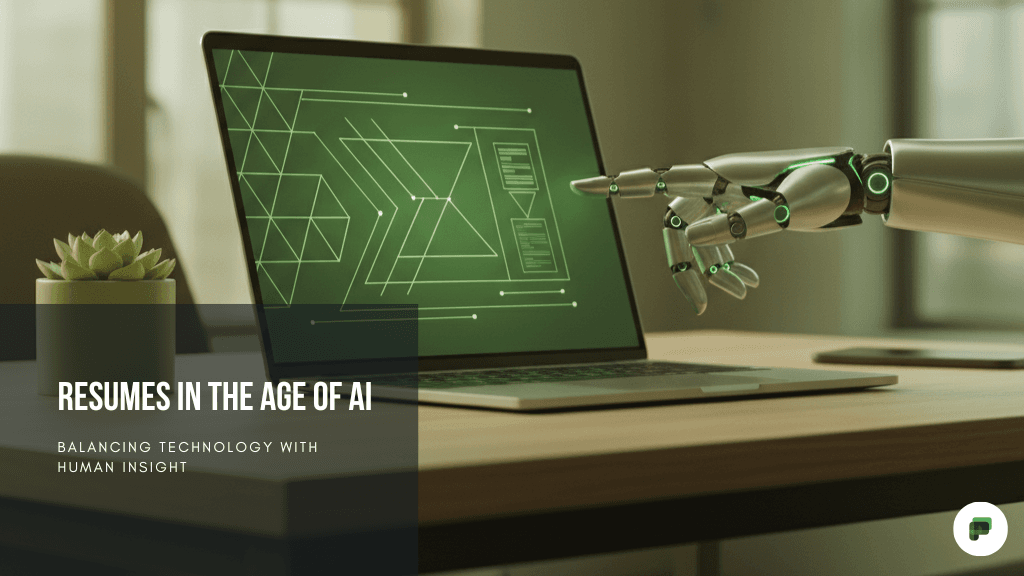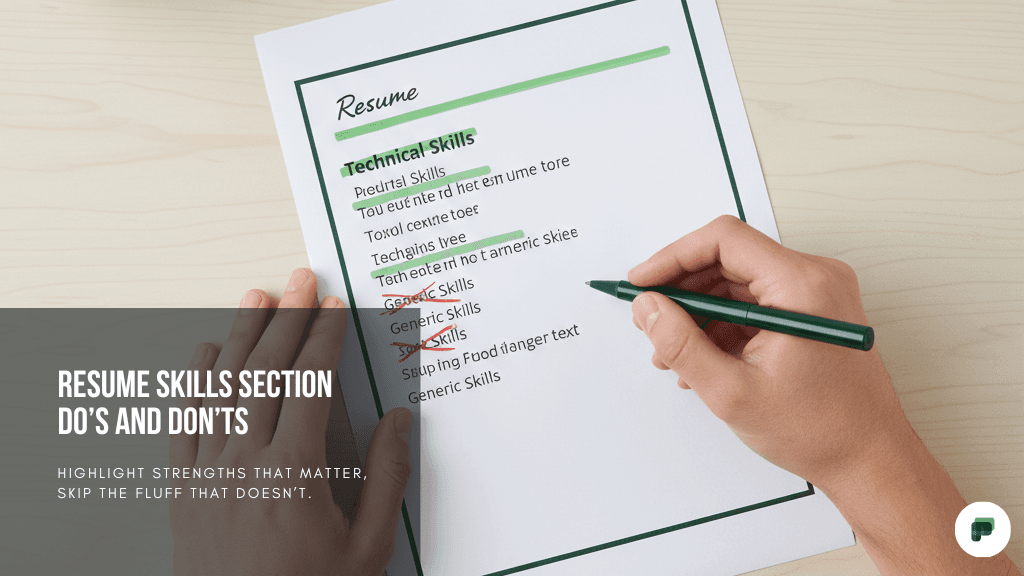Entry-Level Resume Guide: Standing Out With No Experience


Pranav Lakherwal
Entry-Level Resume Guide: Standing Out With No Experience
TL;DR
Securing your first role in AI, data science, or software engineering without traditional experience can feel daunting. This guide empowers you to craft a compelling entry-level resume by redefining 'experience' to include academic and personal projects, certifications, and transferable skills. Learn essential resume tips for structure, keyword optimization, and resume customization to bypass ATS and impress hiring managers, proving your potential even with no experience.
Breaking into the competitive fields of AI, data science, and software engineering is an exciting journey, but it often comes with a common hurdle: the 'experience required' paradox. How do you gain experience if no one will hire you without it? This challenge is particularly acute for those seeking an entry-level resume that truly shines.
At Prepzo.ai, we understand that potential often outweighs prior paid roles. Your resume for no experience isn't about what you lack, but about how effectively you showcase what you do have: foundational knowledge, relevant skills, problem-solving abilities, and an unwavering drive to learn and contribute. This guide will provide actionable resume tips and strategies to help your resume stand out and land you that crucial first interview.
Redefining 'Experience' for Entry-Level Roles
For an entry-level resume, traditional work history isn't the only metric. Think broadly about any activity where you applied technical skills, solved problems, or contributed to a project. This expanded view of 'experience' is crucial for those with no experience in a formal job setting.
Academic Projects: Capstone projects, research papers, significant coursework assignments. Did you build a predictive model, develop a new software feature, or analyze a complex dataset? Detail the problem, your approach, the technologies used, and the outcome.
Personal Projects & Portfolio: This is your golden ticket. Showcase your initiative and practical skills. Examples include building web applications, creating machine learning models, contributing to open-source projects, or conducting independent data analyses. Always link to GitHub repositories or a personal website/portfolio.
Internships (Paid or Unpaid): Even short-term or unpaid internships provide invaluable experience. Highlight specific responsibilities, skills gained, and quantifiable achievements.
Volunteering & Community Work: Did you use technical skills to help a non-profit? Perhaps you designed a database, managed a website, or organized data. Focus on transferable skills.
Certifications & Bootcamps: These demonstrate a commitment to learning and a mastery of specific tools or concepts. List relevant certifications from platforms like Coursera, edX, or industry-recognized bodies.
Hackathons & Competitions: Participating in these events showcases your ability to work under pressure, collaborate, and apply your skills to solve real-world problems. Mention any awards or notable achievements.
Sign up at Prepzo.ai to leverage effective Resume Optimizations.
Structuring Your Entry-Level Resume for Impact
A well-structured resume is easy to read and ensures hiring managers quickly find the information they need. For an entry-level resume, prioritize sections that highlight your relevant skills and potential.
-
Contact Information: Your name, phone number, professional email, LinkedIn profile URL, and GitHub/portfolio link. Ensure all links are active.
-
Professional Summary/Objective: Move beyond a simple 'objective.' Craft a concise (2-4 sentence) summary that highlights your key skills, career aspirations, and enthusiasm for the field. This is an ideal place for resume customization. Tailor it to each specific job description.
-
Education: For recent graduates, this should be prominent. Include your degree, major, university, graduation date, relevant coursework (e.g., 'Machine Learning Fundamentals,' 'Data Structures & Algorithms'), and GPA if it's 3.5 or higher. List any academic honors or scholarships.
-
Projects (The Cornerstone): This is often the most important section for a resume for no experience. For each project:
- Project Title & Brief Description: What was the goal?
- Technologies Used: List specific tools, languages, and frameworks (e.g., Python, TensorFlow, SQL, AWS, React).
- Impact/Results: Quantify wherever possible. Instead of 'Analyzed data,' try 'Developed a predictive model using Python and Scikit-learn to forecast customer churn with 85% accuracy, leading to actionable insights for marketing strategy.'
- Link: Provide a link to the project's GitHub repository or live demo.
-
Skills: Create dedicated subsections for different skill types:
- Programming Languages: (e.g., Python, Java, R, C++)
- Libraries/Frameworks: (e.g., TensorFlow, PyTorch, Scikit-learn, Pandas, NumPy, Spring Boot, React, Node.js)
- Tools & Platforms: (e.g., Git, Docker, Kubernetes, AWS, Azure, Google Cloud, SQL, Tableau, Power BI)
- Methodologies/Concepts: (e.g., Agile, Scrum, OOP, Data Structures, Algorithms, Statistics, Machine Learning, Deep Learning, NLP)
- Soft Skills: (e.g., Problem-Solving, Critical Thinking, Communication, Teamwork, Adaptability)
-
Work Experience (If Any): If you have unrelated work experience, focus on transferable skills like problem-solving, attention to detail, teamwork, customer service, or project coordination. Quantify achievements where possible.
-
Certifications/Awards/Achievements: List relevant certifications (e.g., AWS Certified Cloud Practitioner, Google Data Analytics Professional Certificate) and any academic or competition awards.
Essential Resume Tips for No Experience
Beyond structure, these resume tips will significantly boost your application's effectiveness, especially when crafting a resume for no experience.
1. Keyword Optimization (ATS-Friendly): Most large companies use Applicant Tracking Systems (ATS) to filter resumes. Scan the job description for keywords (e.g., 'Python,' 'SQL,' 'machine learning,' 'Agile,' 'cloud platforms'). Integrate these exact terms naturally into your summary, skills, and project descriptions. This is a critical aspect of effective resume customization.
2. Quantify Everything: Numbers grab attention and provide concrete evidence of your impact. Instead of 'Managed data,' try 'Managed a dataset of 10,000+ records, improving data retrieval efficiency by 15%.'
3. Use Strong Action Verbs: Start bullet points with dynamic verbs like 'Developed,' 'Implemented,' 'Analyzed,' 'Optimized,' 'Designed,' 'Built,' 'Collaborated,' 'Resolved,' 'Automated.'
4. Conciseness is Key: For an entry-level resume, one page is ideal. If you have extensive relevant projects or a strong academic background, two pages can be acceptable, but avoid unnecessary fluff.
5. Flawless Proofreading: Typos and grammatical errors signal a lack of attention to detail – a major red flag. Use grammar checkers (like Grammarly) and have multiple people review your resume.
6. Professional Formatting: Choose a clean, easy-to-read font (e.g., Helvetica, Arial, Lato). Use consistent formatting for headings, bullet points, and dates. Save your resume as a PDF to preserve formatting.
7. Tailor, Tailor, Tailor: This cannot be stressed enough. Generic resumes rarely succeed. For every application, review the job description and adjust your summary, skills, and project descriptions to directly align with the role's requirements. This targeted resume customization significantly increases your chances of getting noticed.
Beyond the Resume: The Full Package
While your entry-level resume is paramount, remember it's one piece of your overall application strategy:
A Compelling Cover Letter: This is your opportunity to elaborate on your passion for the role and company, connect your projects to their needs, and explain any career transitions or gaps. It's especially vital when you have no experience.
Strong Online Presence: Ensure your LinkedIn profile is up-to-date and consistent with your resume. Your GitHub profile should showcase active, well-documented projects. A personal website can serve as a portfolio, centralizing your work.
Networking: Connect with professionals in your target industry. Informational interviews can provide insights and sometimes even lead to opportunities. Often, a personal referral can bypass some initial resume screening.
Conclusion
Landing your first role in tech with no experience isn't impossible; it requires strategic thinking and meticulous effort in crafting your entry-level resume. By focusing on your transferable skills, showcasing impactful projects, and diligently applying resume tips like keyword optimization and resume customization, you can effectively demonstrate your potential to hiring managers. Your journey into AI, data science, or software engineering begins with a resume that tells your unique story of ambition and capability. Start building yours today!
FAQ
Q: How long should an entry-level resume be?
A: For an entry-level resume, one page is generally preferred. If you have extensive, highly relevant academic or personal projects, or an exceptional academic record, two pages can be acceptable, but ensure every piece of information adds significant value and directly supports your candidacy.
Q: Should I include personal projects on my resume for no experience?
A: Absolutely! Personal projects are crucial for candidates with no traditional work experience. They demonstrate your practical skills, initiative, problem-solving abilities, and passion for the field. Make sure to detail the project's purpose, technologies used, and quantifiable outcomes, and provide links to GitHub or a live demo.
Q: What if I have no relevant work experience at all?
A: If you have no relevant paid work experience, focus on highlighting other forms of 'experience': academic projects, personal projects, certifications, bootcamps, hackathon participation, and transferable skills from any past roles (even unrelated ones like customer service or retail). Emphasize what you've learned and how you've applied technical skills in various contexts.
Q: How do I make my resume ATS-friendly?
A: To make your resume ATS-friendly, incorporate keywords directly from the job description into your professional summary, skills section, and project descriptions. Use standard headings (e.g., 'Education,' 'Experience,' 'Skills,' 'Projects'), avoid complex graphics or tables, and use clear, professional fonts. Always save your resume as a PDF.
Q: Is a cover letter necessary for entry-level roles?
A: Yes, a cover letter is highly recommended for entry-level roles, especially when you have limited experience. It allows you to express your genuine interest in the company and position, connect your unique background (academic projects, personal interests, transferable skills) to the job requirements, and explain why you're a great fit despite a lack of traditional experience.
--

Pranav Lakherwal
Related Articles

10 Free Resume Builder Tools That Will Transform Your Job Search
Building a resume is easy, but building the *right* resume is crucial for landing interviews. Discover how Prepzo's AI Resume Analyzer and other tools can transform your job search.
Pranav Lakherwal

How AI is Revolutionizing Resume Building: Benefits, Limitations, and the Human Touch
Explore the power of AI resume builders and optimization tools, understand their limitations, and learn how to infuse your unique human voice for maximum impact.
Pranav Lakherwal

Resume Skills Section: What to Include and What to Leave Out
Your resume's skills section is a crucial showcase of your abilities. Learn how to craft a compelling skills list that grabs attention and aligns with job requirements.
Pranav Lakherwal